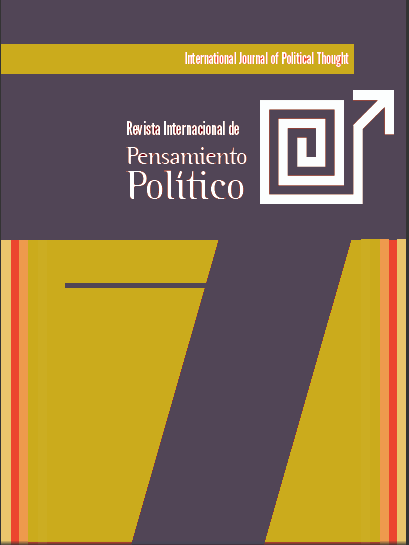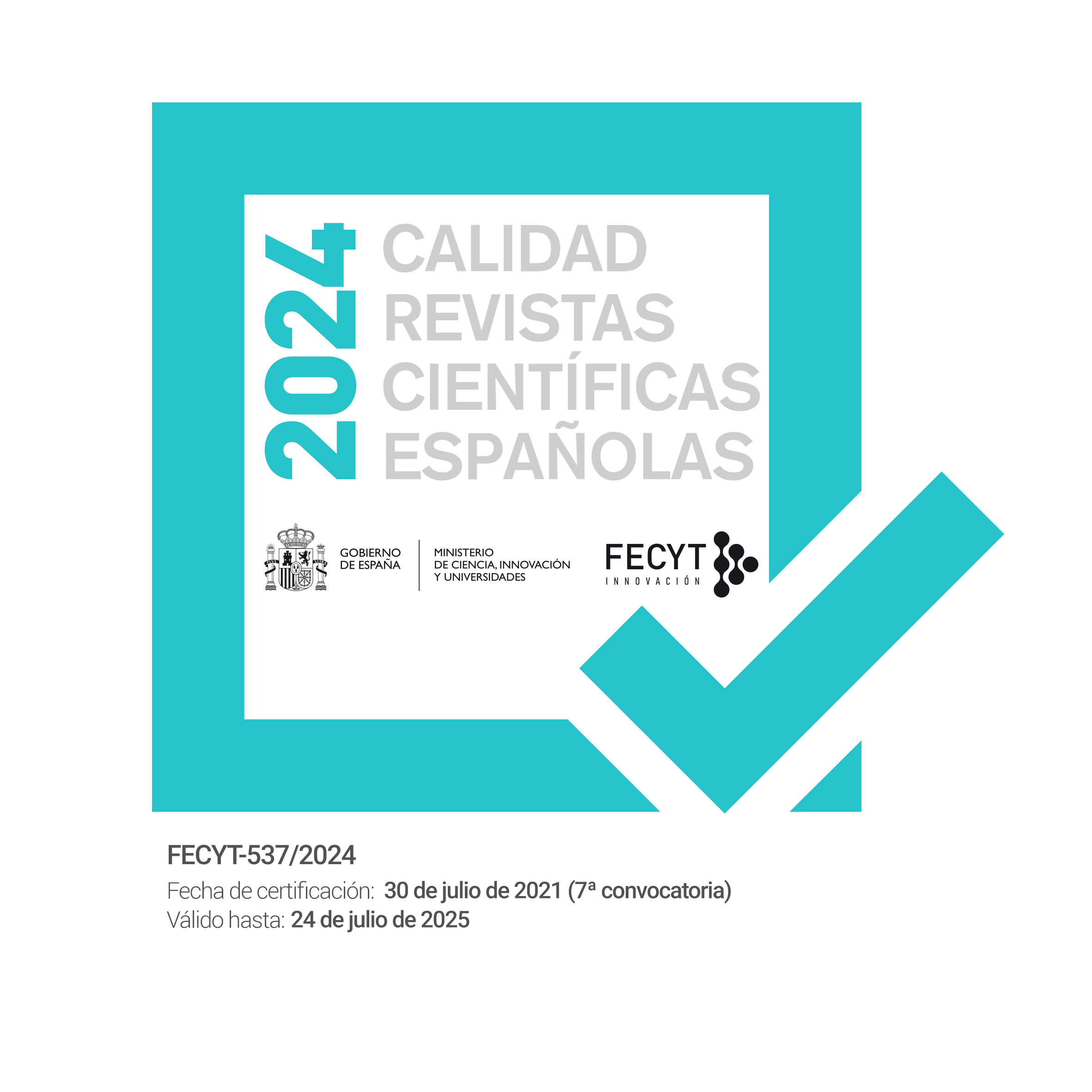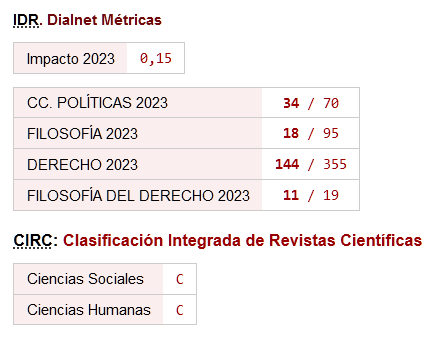The regulation of trafficking in human beings under conditions of armed conflict settings
Between silences and a state-centric approach in the (de)protection of human rights
DOI:
https://doi.org/10.46661/revintpensampolit.10662Keywords:
human trafficking, armed conflicts, state-centric approach, human rightsAbstract
The article analyzes the regulatory regime of the (des)protection of human rights in combating human trafficking under conditions of armed conflict settings (HTCACS). This analysis focuses on the Palermo Protocol and its controversial extension to cases of HTCACS. The central argument is that there are two main fields of issues that threaten the holistic and comprehensive guarantee of the rights of victims and those at risk of becoming victims. One is related to the silences about the particulars of HTCACS in the design of the referred Protocol. The other is linked to its state-centric approach, which unfolds into the securitization of migration and the criminogenic model of addressing HTCACS.
Downloads
References
ACNUR. (2006). Directrices sobre la Protección Internacional N°7: La aplicación del artículo 1A(2) de la Convención de 1951 o del Protocolo de 1967 sobre el Estatuto de los Refugiados en relación con las víctimas de la trata de personas y las personas que están en riesgo de ser víctimas de la trata
Avdan, N. (2012). Human trafficking and migration control policy: Vicious or virtuous cycle? Journal of Public Policy, 32(3), 171-205. https://doi.org/10.1017/S0143814X12000128
Berlanga, M. I. (2021). La trata de menores en los conflictos armados desde un enfoque basado en los derechos humanos. Revista Electrónica de Estudios Internacionales, 41, 1-36. https://doi.org/10.17103/reei.41.12
Bowersox, Z. (2019). Does Human Trafficking Extend Conflict Duration? Journal of Human Trafficking, 5(4), 267-280. https://doi.org/10.1080/23322705.2018.1486630
Brunovskis, A, & Surtees, R. (2017). Vulnerability and exploitation along the Balkans route: Identifying victims of human trafficking in Serbia. Olso: Fafo, Nexus, Atina and CYI
Cano, A. B. V. (2019). Reexaminando la definición de trata de seres humanos del Protocolo de Palermo: La trata como forma de explotación. Estudios de Deusto, 67(2), 15-29. https://doi.org/10.18543/ed-67(2)-2019pp15-29
Carling, J., Gallagher, A. T., & Horwood, C. (2015). Beyond Definitions–Global migration and the smuggling-trafficking nexus. In: Nairobi: Danish Refugee Council
Chuang, J. A. (2014). Exploitation Creep and the Unmaking of Human Trafficking Law. The American Journal of International Law, 108(4), 609-649. https://doi.org/10.5305/amerjintelaw.108.4.0609
Correa da Silva, W. (2019). La interseccionalidad en la trata de seres humanos: Un encuentro necesario para el enfoque de derechos humanos. En TRATA DE PERSONAS, GÉNERO Y MIGRACIONES EN ANDALUCÍA (ESPAÑA), COSTA RICA Y MARRUECOS Retos y propuestas para la defensa y garantía de los derechos humanos. Dykinson. https://doi.org/10.2307/j.ctvr7f6vm.6
Correa da Silva, W. (2022). Regime internacional de enfrentamento ao tráfico de pessoas. Avanços e desafios para a proteção dos direitos humanos. Lumen Juris
Correa da Silva, W. & Reyes, G. S. (2023). El nexo entre trata de seres humanos y desplazamientos forzados inducidos por conflictos a partir de las lentes del feminismo interseccional. Relaciones Internacionales, 54, 95-112. https://doi.org/10.15366/relacionesinternacionales2023.54.005
Crawley, H., & Skleparis, D. (2018). Refugees, migrants, neither, both: Categorical fetishism and the politics of bounding in Europe’s ‘migration crisis’. Journal of Ethnic and Migration Studies, 44(1), 48-64. https://doi.org/10.1080/1369183X.2017.1348224
Crépeau, F., Nakache, D., & Atak, I. (2007). International migration: Security concerns and human rights standards. Transcultural Psychiatry, 44(3), 311-337. https://doi.org/10.1177/1363461507081634
Ditmore, M., & Wijers, M. (2003). The negotiations on the UN protocol on trafficking in persons. Nemesis, 4, 79-88
Doezema, J. (2005). Now You See Her, Now You Don’t: Sex Workers at the UN Trafficking Protocol Negotiation. Social & Legal Studies, 14(1), 61-89. https://doi.org/10.1177/0964663905049526
Erdal, M. B., & Oeppen, C. (2019). Forced to leave? The discursive and analytical significance of describing migration as forced and voluntary. En Aspiration, Desire and the Drivers of Migration. Routledge. https://doi.org/10.1201/9780429281181-4
Fiske, L., & Briskman, L. (2021). The Impossibility of Home: Displacement and Border Practices in Times of Crisis. Social Sciences, 10(10), 400. https://doi.org/10.3390/socsci10100400
Fitzpatrick, J. (2003). Trafficking as a Human Rights Violation: The Complex Intersection of Legal Frameworks for Conceptualizing and Combating Trafficking. Michigan Journal of International Law, 24(4), 1143-1167
Frelick, B., Kysel, I. M., & Podkul, J. (2016). The Impact of Externalization of Migration Controls on the Rights of Asylum Seekers and Other Migrants. Journal on Migration and Human Security, 4(4), 190-220. https://doi.org/10.1177/233150241600400402
Gallagher, A. (2002). Trafficking, Smuggling and Human Rights: Tricks and Treaties. Forced Migration Review, 25-28
Gallagher, A. T. (2015). Trafficking in Persons and Armed Conflict (SSRN Scholarly Paper 3014272). https://doi.org/10.2139/ssrn.3014272
Hancock, A.-M. (2007a). Intersectionality as a Normative and Empirical Paradigm. Politics & Gender, 3(2), 248-254. https://doi.org/10.1017/S1743923X07000062
Hancock, A.-M. (2007b). When Multiplication Doesn’t Equal Quick Addition: Examining Intersectionality as a Research Paradigm. Perspectives on Politics, 5(1), 63-79. https://doi.org/10.1017/S1537592707070065
Henning, C. E. (2015). Interseccionalidade e pensamento feminista: As contribuições históricas e os debates contemporâneos acerca do entrelaçamento de marcadores sociais da diferença. Mediações - Revista de Ciências Sociais, 20(2), 97-128. https://doi.org/10.5433/2176-6665.2015v20n2p97
Huysmans, J. (2006). The Politics of Insecurity: Fear, Migration and Asylum in the EU. Routledge. https://doi.org/10.4324/9780203008690
Ilcan, S. (2021). The Border Harms of Human Displacement: Harsh Landscapes and Human Rights Violations. Social Sciences, 10(4), 123. https://doi.org/10.3390/socsci10040123
Kofman, E. (2019). Gendered mobilities and vulnerabilities: Refugee journeys to and in Europe. Journal of Ethnic and Migration Studies, 45(12), 2185-2199. https://doi.org/10.1080/1369183X.2018.1468330
Korac, M. (2017). Bordering and Rebordering Security: Causes and Consequences of Framing Refugees as a ‘Threat’ to Europe (M. Bobić & S. Janković, Eds.). Institute for Sociological Research, University of Belgrade
Krieg, S. H. (2009). Trafficking in Human Beings: The EU Approach between Border Control, Law Enforcement and Human Rights. European Law Journal, 15(6), 775-790. https://doi.org/10.1111/j.1468-0386.2009.00490.x
Lee, M. (2005). Human trade and the criminalization of irregular migration. International Journal of the Sociology of Law, 33(1), 1-15. https://doi.org/10.1016/j.ijsl.2004.09.004
Lee, M. (2007). Human Trafficking. Willan Publishing
Lobasz, J. K. (2009). Beyond Border Security: Feminist Approaches to Human Trafficking. Security Studies, 18(2), 319-344. https://doi.org/10.1080/09636410902900020
Ludwig, B. (2016). “Wiping the Refugee Dust from My Feet”: Advantages and Burdens of Refugee Status and the Refugee Label. International Migration, 54(1), 5-18. https://doi.org/10.1111/imig.12111
Malinowski, R. L., Otube, S. N., Alexander, A., & Mogambi, A. M. (2016). Displacement, violence and vulnerability: Trafficking among internally displaced persons in Kenya. Awareness Against Human Trafficking (HAART)
Melossi, D. (2015). Crime, Punishment and Migration. SAGE. https://doi.org/10.4135/9781473920965
Mendola, D., & Pera, A. (2022). Vulnerability of refugees: Some reflections on definitions and measurement practices. International Migration, 60(5), 108-121. https://doi.org/10.1111/imig.12942
Naciones Unidas. (2000). Protocolo para Prevenir, Reprimir y Sancionar la Trata de Personas, Especialmente Mujeres y Niños, que complementa la Convención de las Naciones Unidas contra la Delincuencia Organizada Transnacional
Ní Aoláin, F., Cahn, N. R., Haynes, D. F., & Valji, N. (Eds.). (2018). The Oxford handbook of gender and conflict. Oxford University Press. https://doi.org/10.1093/oxfordhb/9780199300983.001.0001
Njoku, E. T., Akintayo, J., & Mohammed, I. (2022). Sex trafficking and sex-for-food/money: terrorism and conflict-related sexual violence against men in the Lake Chad region. Conflict, Security & Development, 22(1), 79–95. https://doi.org/10.1080/14678802.2022.2034369
Obokata, T. (2006). Trafficking of human beings from a human rights perspective: Towards a holistic approach. Martinus Nijhoff. https://doi.org/10.1163/ej.9789004154056.i-247
Ogunniyi, D. (2024). Armed Conflict-induced Displacement and Human Trafficking in the Sahel: Organised crime, vulnerabilities, and the accountability of non-state armed groups. Anti-Trafficking Review, 22, 74-90. https://doi.org/10.14197/atr.201224225
Piotrowicz, R. (2021). Human Trafficking in Conflict: Context, Causes and the Military, Crime Prevention and Security Management. International Journal of Refugee Law, 33(2), 368-371. https://doi.org/10.1093/ijrl/eeab040
Pourmokhtari, N. (2015). Global Human Trafficking Unmasked: A Feminist Rights-Based Approach. Journal of Human Trafficking, 1(2), 156-166. https://doi.org/10.1080/23322705.2014.1000078
Regional Mixed Migration Secretariat. (2014). Abused & Abducted the plight of female migrants from the Horn of Africa in Yemen. Study 7. Mixed migration research series
Rooney, E. (2018). Intersectionality: Working in conflict. En F. Ní Aoláin, N. Cahn, D. F. Hayes, & N. Valji (Eds.), The Oxford Handbook of Gender and Conflict. Oxford University Press. https://doi.org/10.1093/oxfordhb/9780199300983.013.26
Sahan Foundation & Intergovernmental Authority on Development (IGAD). (2016). Human trafficking and Smuggling on the Horn of Africa-Central Mediterranean Route
Sajjad, T. (2018). What’s in a name? ‘Refugees’, ‘migrants’ and the politics of labelling. Race & Class, 60(2), 40-62. https://doi.org/10.1177/0306396818793582
Schindel, E. (2022). Death by ‘nature’: The European border regime and the spatial production of slow violence. Environment and Planning C: Politics and Space, 40(2), 428-446. https://doi.org/10.1177/2399654419884948
Segrave, M. (2009). Human trafficking and human rights. Australian Journal of Human Rights, 14(2), 71-94. https://doi.org/10.1080/1323238X.2009.11910855
Thill, M., & Giménez Armentia, P. (2016). El enfoque de género: Un requisito necesario para el abordaje de la trata de seres humanos con fines de explotación sexual. Revista europea de derechos fundamentales, 27, 439-459
UNODOC. (2018). Global Report on Trafficking in Persons. Booklet 2: Trafficking in persons in the context of armed conflict. Vienna
UNODOC. (2022). Conflict in Ukraine: key evidence on risks of trafficking in persons and smuggling of migrants. Vienna
Villellas, A., Urrutia, P., Royo, J. M., & Villellas, M. (2016). Violencia sexual en conflictos armados. Quaderns de construcció de pau n. 27. Escola de cultura de pau
Yousaf, F. N. (2018). Forced migration, human trafficking, and human security. Current Sociology, 66(2), 209-225. https://doi.org/10.1177/0011392117736309
Yousaf, F. N., & Purkayastha, B. (2015). ‘I am only half alive’: Organ trafficking in Pakistan amid interlocking oppressions. International Sociology, 30(6), 637-653. https://doi.org/10.1177/0268580915605648
Zarkov, D. (2018). From Women and War to Gender and Conflict? Feminist Trajectories. En F. Ní Aoláin, N. Cahn, D. F. Haynes, & N. Valji (Eds.), The Oxford Handbook of Gender and Conflict. Oxford University Press. https://doi.org/10.1093/oxfordhb/9780199300983.013.3
Downloads
Published
How to Cite
Issue
Section
License
Copyright (c) 2024 Luiz Henrique Garbellini Filho

This work is licensed under a Creative Commons Attribution-NonCommercial-ShareAlike 4.0 International License.
Open access policy
Free and open access is allowed to any interested party to all the contents of the journal issues, free of charge, being able to print and transfer all the articles, with the only condition of specifying the source and authorship.
The journal: a) does not charge authorship costs for the processing of articles or for their submission, b) maintains copyright for authors without restrictions, c) facilitates authors to keep their publication rights without limitations.
The International Journal of Political Thought is an original work of the Laboratory of Political Ideas and Practices of the Pablo de Olavide University. All articles included in the Journal are original work of their respective authors. This Journal is freely offered to the scientific and academic community at no cost and releases the contents according to the license "Attribution-NonCommercial-ShareAlike 4.0 CC BY-NC-SA" of the Creative Commons project available in the following url: https://creativecommons.org/licenses/by-nc-sa/4.0/legalcode
If you wish to translate or compile any of the articles available here, please contact us at contacto













 ISSN: 1885-589X
ISSN: 1885-589X  Universidad Pablo de Olavide
Universidad Pablo de Olavide